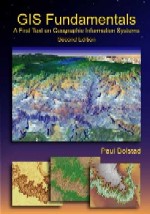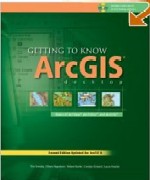 INTRODUCTION
INTRODUCTIONThere is an abundance of GIS data available in digital format for many parts of the world. Much of this data has been created by local, state, and federal governments to support their basic public services such as safety, health, transportation, water and energy. Spatial data is also required for disaster planning and management, national defense and more.
LEARNING OBJECTIVES
- Discuss why many state and local governments create digital GIS data
- List the 3 general forms digital data are typically provided
- Discuss why it is so difficult to create data sets at a global scale
- List 2 datasets that are available at a global scale
- Describe the primary goal of the Global Spatial Dataset Infrastructure (GSDI)
- Define the National Spatial Data Infrastructure (NSDI)
- Discribe Digital Raster Graphics (DRG's)
- Describe Digital Line Graphs (DLG's)
- Describe Digital Elevation Models (DEM's)
- Describe National Elevation Dataset (NED)
- Describe Digital Orthophoto Quadrangles (DOQ's)
- Discuss the primary types of hydrologic data available
- Describe the National Wetlands Inventory (NWI)
- Describe the types of digital soils data available in the United States
- Describe the types of flood plain data available.
- Describe the digital census data available today
- Describe the National Land Cover Data (NLCD)
- Digital data
- AVHRR
- MODIS
- NASA
- Global Spatial Dataset Infrastructure (GSDI)
- Global Map
- United States Geological Survey (USGS)
- National Spatial Data Infrastructure (NSDI)
- National Geospatial Data Clearinghouse (NGDC)
- USGS National Map
- Digital Raster Graphics (DRG's)
- Digital Line Graphs (DLG's)
- Digital Elevation Models (DEM's)
- National Elevation Data (NED)
- LIDAR
- Shuttle Radar Topography Mission (SRTM)
- Hydrography
- Hypsography
- Tiles 1:24000 USGS quadrangle data
- Digital Orthophoto Quadrangles (DOQ's)
- National Hydrologic Dataset (NHD)
- Minimum Mapping Unit (MMU)
- National Resource Conservation Service (NRCS)
- National Soil Geography (NATSGO)
- State Soil Geographic (STATSGO)
- Soil Survey Geographic (SSURGO)
- United States Census Bureau
- Topologically Integrated Geographic Encoding and Referencing (TIGER)
- National Land Cover Data (NLCD)
READING ASSIGNMENT
GIS Fundamentals - Chapter 7 - Digital Data - Get the PowerPoint supplement here.
ASSIGNMENTS (ACTIVE LEARNING EXERCISES)
- Complete the 2 exercises from Mastering ArcGIS. See handouts from class.



No comments:
Post a Comment